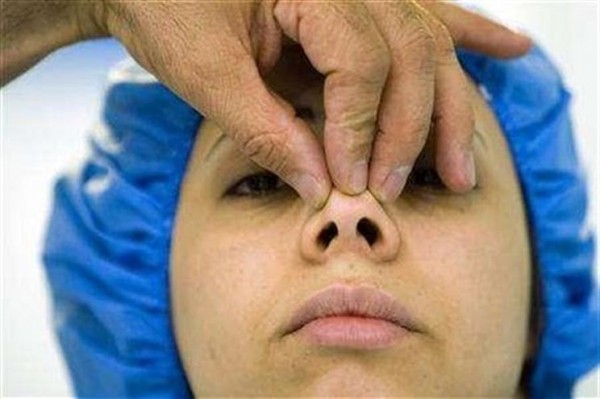Bad Nose Shape? Blame the Genes
| Ellie Froilan | | May 24, 2016 05:19 AM EDT |
(Photo : Reuters) The shape of the nose is atributed to four genes: DCHS2, RUNX2, GLI3, and PAX1
A team of scientists has discovered responsible for the shape of human noses, an advance that can help understand how our faces evolved and aid forensic DNA technologies.
Researchers from University College London (UCL) have identified the genes known as DCHS2, RUNX2, GLI3, and PAX1, and all play a part in determining the width and sharpness of our nose. In specific, the latter two genes are mainly involved in predicting nostril width; the first predicts pointiness, while the second gene, RUNX2, informs nose breadth. In addition to the four aforementioned genes, researcher also discovered a gene called EDAR, which affects chin protrusion.
Like Us on Facebook
For the study, researchers analyzed more than 6,000 people from Colombia, Peru, Brazil, Chile and Mexico participating in the CANDELA study. After initial screening, the researchers chose 5,958 people for the study: 50 percent of which belongs to mixed European Heritage, 45 percent were Native Americans, and the remaining 5 percent came from African ancestry.
After studying the facial features of the participants, the researchers compared the output with the genetic makeup of each individual. A comparison between facial features and genes enabled researchers to identify the key genes that affect the pointiness and the shape of the nose. A sub-group of 3,000 participants was also created to undergo 3D reconstruction of their face to obtain exact measurement of their facial features.
“Finding out the role each gene plays helps us to piece together the evolutionary path from Neanderthal to modern humans. It brings us closer to understanding how genes influence the way we look, which is important for forensics applications,” said the first author of the report, Dr Kaustubh Adhikari, UCL Cell & Developmental Biology, in a statement.
The study also found that these genes appear to influence other facial characteristics such as your forehead profile, the thickness of your lips and how much your brow ride protrudes.
The researchers believe that the study may have some other broader implications. These include the shape of one’s nose being related to the environment a person grows up in, as illustrated above. And on a more serious note, it could help researchers learn the origins of genetic abnormalities.
Complete details of the study findings were published in the journal Nature Communications.
©2015 Chinatopix All rights reserved. Do not reproduce without permission
EDITOR'S PICKS
-

Did the Trump administration just announce plans for a trade war with ‘hostile’ China and Russia?
-

US Senate passes Taiwan travel bill slammed by China
-

As Yan Sihong’s family grieves, here are other Chinese students who went missing abroad. Some have never been found
-

Beijing blasts Western critics who ‘smear China’ with the term sharp power
-

China Envoy Seeks to Defuse Tensions With U.S. as a Trade War Brews
-

Singapore's Deputy PM Provides Bitcoin Vote of Confidence Amid China's Blanket Bans
-

China warns investors over risks in overseas virtual currency trading
-

Chinese government most trustworthy: survey
-

Kashima Antlers On Course For Back-To-Back Titles
MOST POPULAR
LATEST NEWS
Zhou Yongkang: China's Former Security Chief Sentenced to Life in Prison

China's former Chief of the Ministry of Public Security, Zhou Yongkang, has been given a life sentence after he was found guilty of abusing his office, bribery and deliberately ... Full Article
TRENDING STORY

China Pork Prices Expected to Stabilize As The Supplies Recover

Elephone P9000 Smartphone is now on Sale on Amazon India

There's a Big Chance Cliffhangers Won't Still Be Resolved When Grey's Anatomy Season 13 Returns

Supreme Court Ruled on Samsung vs Apple Dispute for Patent Infringement

Microsoft Surface Pro 5 Rumors and Release Date: What is the Latest?












